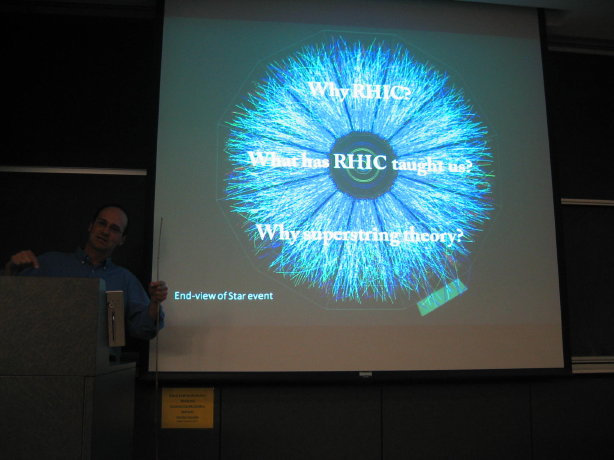Whither String Theory? – Too Soon To Tell
 Gosh, a thoughtfully-written general level (more or less) article on some of the general outcomes of string theory research! It’s written by Matthew Chalmers, and is in the Sept. ’07 edition of Physics World*. The article can be read online here, and downloadable pdf is here. The graphic on the right came with the article. I don’t fully understand what it is, but the title, like that of the article, is “stringscape”… Look, let’s not over-think this cvj – it’s a pretty decoration.
Gosh, a thoughtfully-written general level (more or less) article on some of the general outcomes of string theory research! It’s written by Matthew Chalmers, and is in the Sept. ’07 edition of Physics World*. The article can be read online here, and downloadable pdf is here. The graphic on the right came with the article. I don’t fully understand what it is, but the title, like that of the article, is “stringscape”… Look, let’s not over-think this cvj – it’s a pretty decoration.
I’ve done a quick read of it (should re-read more carefully later on – it will no doubt have some emphases with which I disagree somewhat**) and I’d say it is very much worth reading. While not a perfect summary (what is?), compared to a lot that’s been out there, you’ll find it rather more informed, less sensational, (refreshingly unpoisoned by various prejudices, such as the presentations of Smolin and Woit – see numerous earlier discussions in the “More Scenes from the Storm in a Teacup” series of posts, and others), and unafraid to go to some length to unpack the issues somewhat carefully.
Very importantly, it contains numerous quotes from various respected researchers in […] Click to continue reading this post

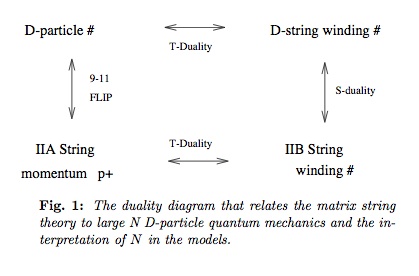
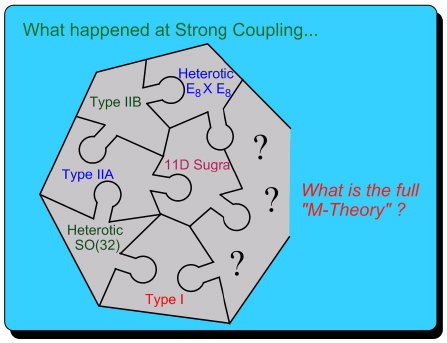

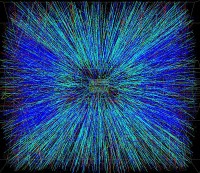
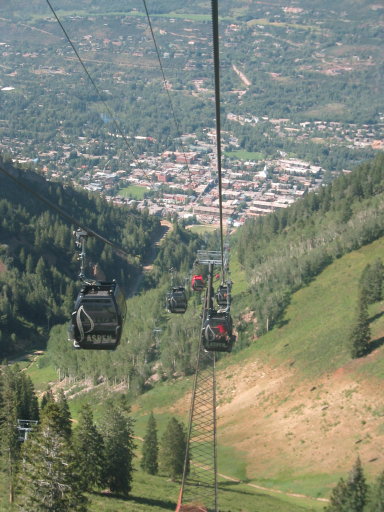
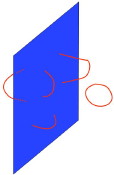
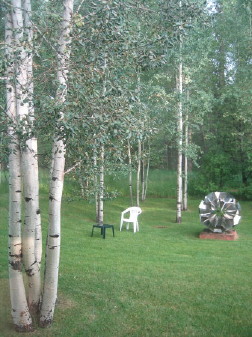
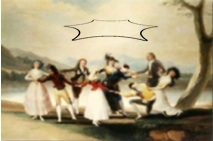
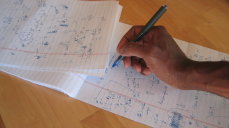 Yes, part of my job is to sit and think about how the universe works. People hear this, and they wonder exactly what that entails. Well, it entails a lot of things – sometimes there’s the grand thoughts and the thought experiments and the like that you hear of from documentaries and books about Einstein and other famous scientists – but more often that not it is grungy nuts and bolts.
Yes, part of my job is to sit and think about how the universe works. People hear this, and they wonder exactly what that entails. Well, it entails a lot of things – sometimes there’s the grand thoughts and the thought experiments and the like that you hear of from documentaries and books about Einstein and other famous scientists – but more often that not it is grungy nuts and bolts. Well, the great news is that the TASI people are making the lectures available online a fairly short time after their delivery. The link is here. So even though not there, you can schedule some time to take these lecture courses if you like. I glanced for a while at Raphael Bousso’s first lecture in the series “Cosmology and the Landscapeâ€, and it was clear and very well presented. (This is not entirely surprising – Raph is always an excellent lecturer.) […]
Well, the great news is that the TASI people are making the lectures available online a fairly short time after their delivery. The link is here. So even though not there, you can schedule some time to take these lecture courses if you like. I glanced for a while at Raphael Bousso’s first lecture in the series “Cosmology and the Landscapeâ€, and it was clear and very well presented. (This is not entirely surprising – Raph is always an excellent lecturer.) […] 